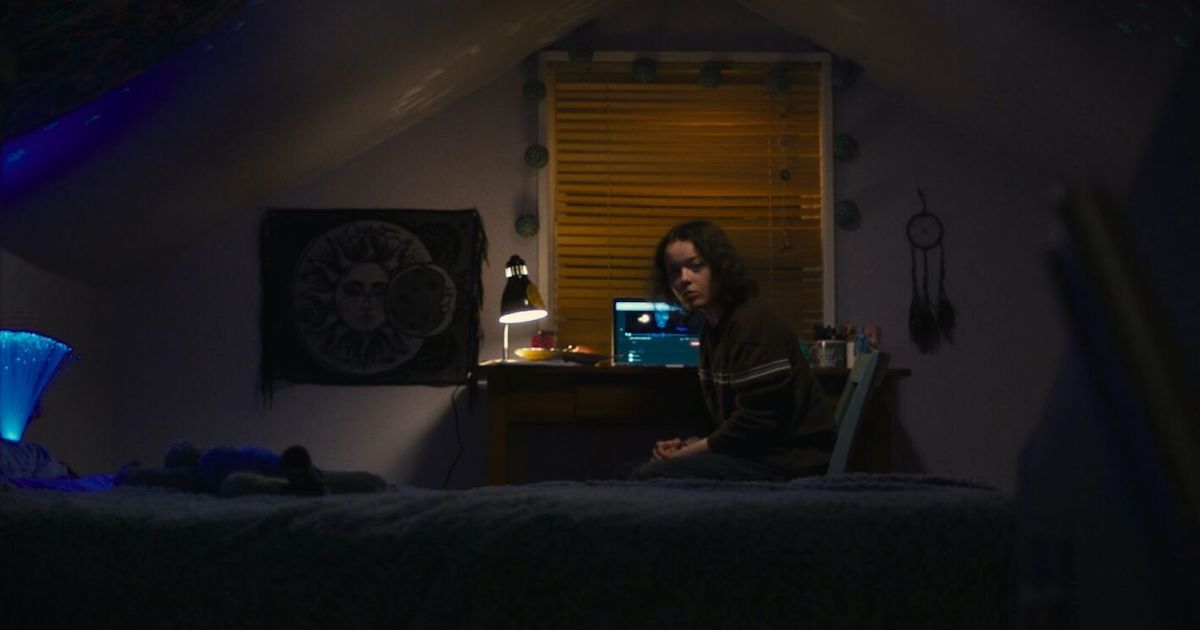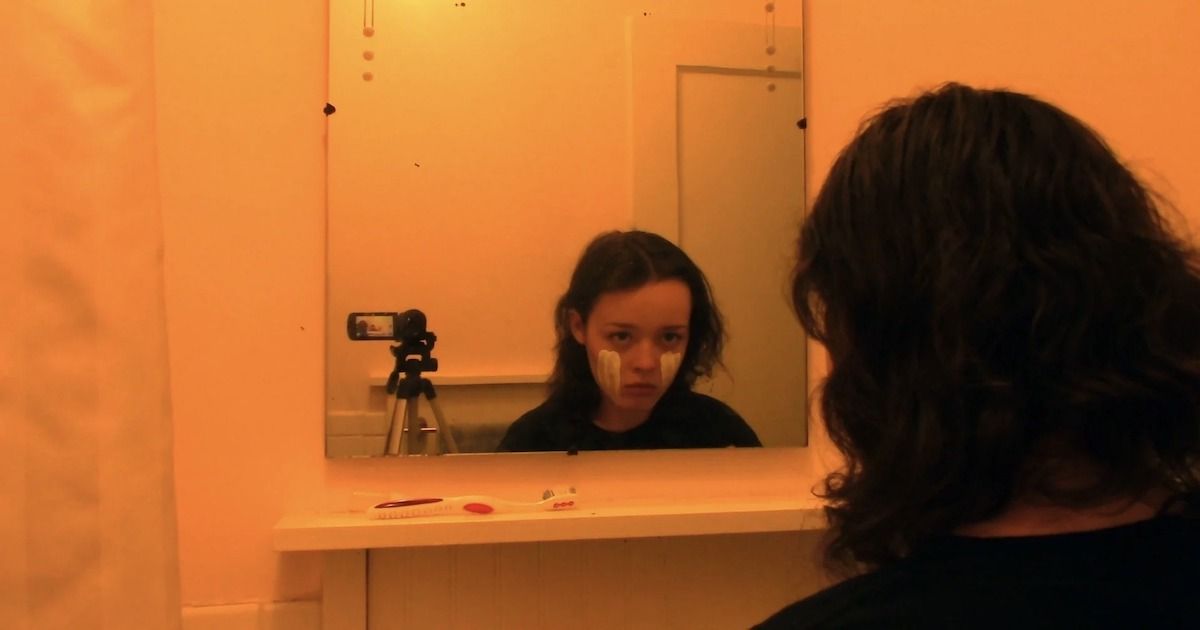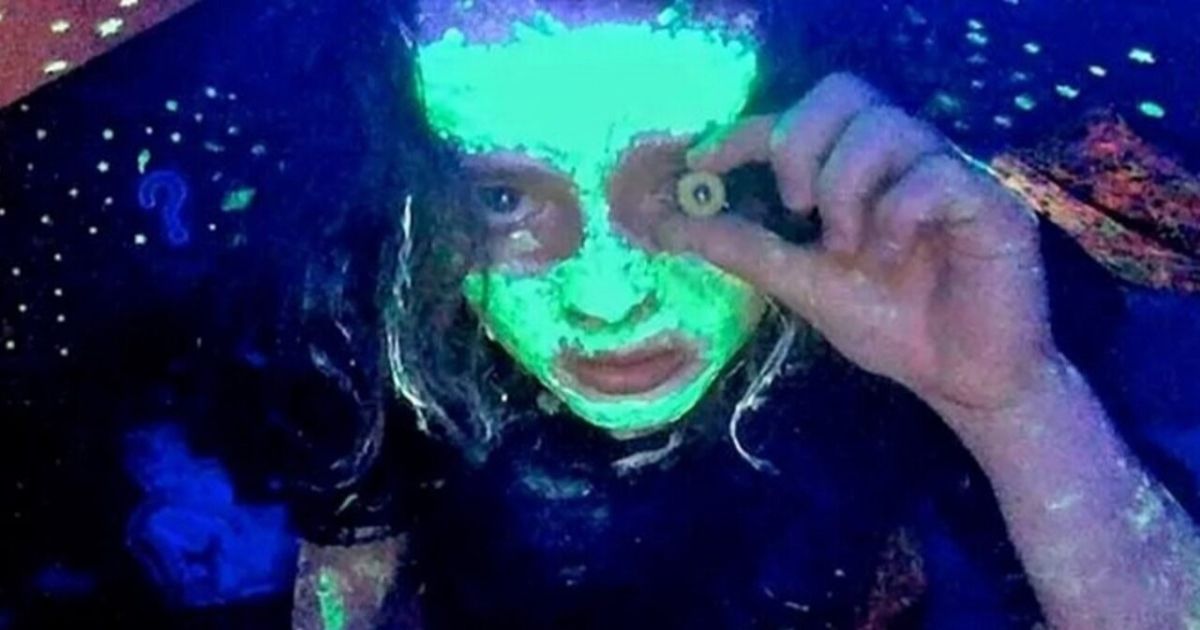This article contains spoilers for We're All Going to the World's Fair
Since the inception of the internet, films have tried and mostly failed to capture the experience of being online. Two cheesy early attempts from 1995, Hackers and The Net, set a low bar for intelligently tackling the topic on the big screen. Still, it has been surprisingly difficult to make significantly better work. 2018's Searching might be the most successful example, but its connection to the web is more of an aesthetic gimmick than a core aspect of its story or themes. 2018 also gave us Cam and Eight Grade, both of which engage with the internet as a part of their larger scope but do not focus on the subject for the entire run time. However, as the generation that grew up online starts to make films, projects that explore the messy and expansive medium are beginning to emerge.
One such recent film, We're All Going to the World's Fair, might be the best representation of what living with and on the internet is like. The remarkable debut feature from writer and director Jane Schoenbrun is a horrific slow burn that succeeds where so many others have failed. Often referred to as "the creepypasta film," We're All Going to the World's Fair is a unique vision that shows the complexity of the internet in its entirety, presenting both the immense positives and negatives that have become an inescapable part of our lives. Let's take a look at how it evokes the same sensations as browsing the web.
The Joy of Discovery and Fear of the Unknown
The internet is a place of infinite discovery. A lifetime could be devoted to exploring everything, and you wouldn't even begin to scratch the surface. This is both wonderful and terrifying. Sometimes you'll come across something incredible, and at other junctures, you'll find the most atrocious content imaginable. What's unique about the internet, as opposed to other methods of communication, is that these highs and lows are often right next to each other.
These uncomfortable juxtapositions are brilliantly shown in We're All Going to the World's Fair through the videos watched by the main character Casey, played by Anna Cobb. In one particularly striking scene, Casey puts on a comforting and reassuring ASMR video to help her fall asleep. However, when that pleasant video ends, a loading screen appears, leading to a disturbing video directed at Casey. Throughout the film, the aforementioned loading screen becomes a symbol of anticipatory dread that transforms into joy or terror, depending on the video that plays. The source of Casey's suffering and treatment is one and the same.
Connection: For Better or For Worse
The internet allows young people unprecedented access to communities they might not otherwise find. This means that lonely children and teens can discover a sense of belonging that eludes them in real life, but they are also exposed to potentially dangerous people. This dynamic is mostly explored through Casey's relationship with the adult man, JLB, played by Michael J. Rogers.
The relationship is a complicated one, with a concerning age gap and power dynamic. What JLB really wants is never clear, and while he seems genuinely concerned with Casey's deteriorating mental state, there is always the worry that he has nefarious motives.
In a conversation with Jane Schoenbrun for Life on Film, the interviewer, Sailor DiNucci-Radley, mentions that "Casey and JLB’s relationship feels really complex, and reminded [her] of [her] own experiences trying to find a trans community online." Schoenbrun responds to this by saying:
"[a]s a nonbinary filmmaker who doesn’t really enjoy binary “that is a good thing or a bad thing” structures when I am looking at the kinds of work I want to make, one of the main things I attempted was complicating and humanizing a relationship that most people would see as really dark. And I tend to agree that it’s a really dark relationship, for a lot of reasons, but the film is overtly challenging your perspective of 'internet stranger danger' and the creepy pedophile who’s got the big beard and the big plan to lure you into something."
Schoenbrun refuses to give us easy answers about the nature of Casey and JLB's relationship, instead using it to highlight both the companionship and potential pitfalls the internet can provide, often at the same time.
What sets We're All Going to the World's Fair apart from other feature-length movies about our experiences online is that none of it could exist without the internet. Everything about it, thematically, sonically, and visually, is steeped in internet culture and the distinctly online horror and creepypasta communities. The film truly captures how browsing the web is both simultaneously chilling and extraordinary in a strikingly melancholic way.



